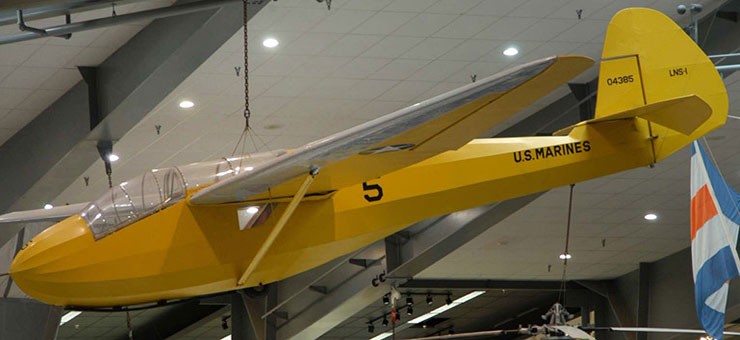LNS-1

Low (PNG, 319x319px, 107KB)
Med (JPEG, 1280x1280px, 54KB)
The Navy procured the Schweizer LNS-1 in 1942 for training of glider pilots to execute airborne assaults, the focus of these operations Glider Group 71 at the Marine Corps base at Parris Island, South Carolina. During operations there, the glide ratio and performance of the LNS-1 was discovered to be very different than what glider pilots would experience in heavier assault gliders with much higher sink rates. That, and the realization that glider operations were impractical in the Pacific, caused the program to be terminated.
In 1941, the U.S. Army acquired the 1938 model Schweizer 2-8 all-metal sailplane, designating it the XTG-2, for training glider pilots. The following year, the Navy ordered 13 of the sailplanes, designating them LNS-1, for use by the Marine Corps' glider training program, Glider Group 71, at Parris Island, South Carolina. It soon became apparent that the sailplane glide ratios were far different from the sink rates that would be encountered by pilots when flying heavier assault gliders. By 1943, the Navy abandoned the sailplane type gliders, opting for modified light planes from which the engine had been removed. One such example, designated LNT-1, was a Taylorcraft with an added seat in the nose to maintain balance. The aircraft had glide ratios and sinking speeds more in line with the cargo/troop gliders that pilots would use operationally. By 1943, however, the efficacy of glider operations in Naval Aviation had come under question, and the program was abandoned, with many of the students transferred to regular flight training.
SPECIFICATIONS
| Manufacturer: | Schweizer Company |
| Type: | Sailplane glider |
| Crew: | Pilot and instructor |
| Dimensions: | Length: 25 ft. Wingspan: 52 ft., 3in. Wing Area: 214 sq. ft. |
| Weight: | Empty: 450 lb. Maximum: 850 lb. |
| Performance: | Glide Ratio: 23.5 to 1 Rate of Sink: 165 ft./min. |
- Aviation
- Photograph
- Image (gif, jpg, tiff)


